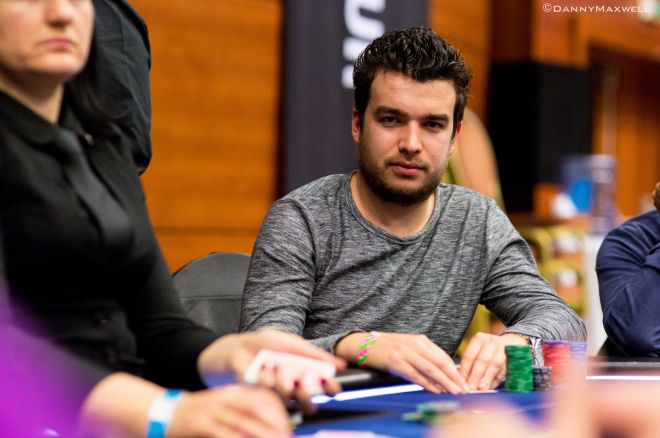Using Multiple-Level Thinking To Turn a Hand Into a Bluff

A couple of months ago, I shared an article entitled “Multiple-Level Thinking in Poker: At What Level Are You?” There I spoke about the different levels of players — from “Level 0” to “Level 5” — that renowned poker authors David Sklansky and Ed Miller discuss in depth in their book No-Limit Hold’em: Theory and Practice.
There I presented those different levels as those authors define them, but I never gave any examples of hands to show the concept in action. In another, more recent book, legendary online grinder Chris Moorman’s Moorman’s Book of Poker, he discusses a hand in his very first example that effectively illustrates multiple-level thinking in operation, as well as the benefits of using all available information when making decisions.
It’s a no-limit hold’em tournament. In the hand, the blinds are 25/50 and a player in middle position opens to 150. Our hero calls in the small blind with A♣J♦ and the flop falls J♣K♦4♥. Hero checks and then calls a 300 continuation bet. The turn is the Q♣ and Hero checks again, but when Villain makes it 500 to go, Hero folds.
When I first read this hand example, I decided that I would almost certainly have played the hand the exact same way. But Moorman disagrees with this line. He notes that while the preflop call from the small blind is a mistake, a bigger mistake is not check-raising on the turn and then betting big on most rivers.
Initially, this struck me as suicidal and a waste of chips so early in a tournament, but after reading Moorman’s analysis it is hard to fault the more aggressive line.
Moorman, the winningest online poker tournament player of all time and an accomplished live player as well, says that the call on the flop is mandatory and that Hero could have the best hand because of Villain betting around 85% of the pot, something of a large continuation bet and one that wouldn’t be out of place with a medium pair that doesn’t want any action.
Then on the turn, Villain not insignificantly reduces his bet size to 53% of the pot. It is this decision that inspires Moorman to take advantage of the situation by responding with aggression.
Moorman says that although the turn card isn’t the best one for Hero’s hand, if Villain is a “Level 2” thinker — that is, one who is thinking “What does my opponent have?” — or is playing at a higher level, then the Q♣ improves Hero’s range massively because KxQx is a big part of the range that fits with the way Hero has played thus far.
The man who won last year’s World Poker Tour L.A. Poker Classic goes on to say that if Villain thinks the Q♣ is a good card for Hero, he would most likely make his turn bet on the larger side because Hero is never folding.
Therefore, Moorman deduces that Villain most likely holds a hand such as AxKx, fears Hero has KxQx or something like a set or straight, but doesn’t want (1) to give a free card, (2) to give up the initiative, or (3) to bloat the pot with a hand that has gone from being strong to marginal.
It is for these reasons that Moorman states he would check-raise in Hero’s position and then take the line of “bombing brick rivers” unless Villain has shown a tendency to be a calling station, because Hero’s line looks like a set rather than a weak holding that has decided to run a bluff.
As the example shows, by figuring out what level thinker your opponent is and adding that to other readily available information such as bet-sizing, you can turn some hands into bluffs and win chips in more pots than you would by taking what many would consider is the standard route.
Get all the latest PokerNews updates on your social media outlets. Follow us on Twitter and find us on both Facebook and Google+!








